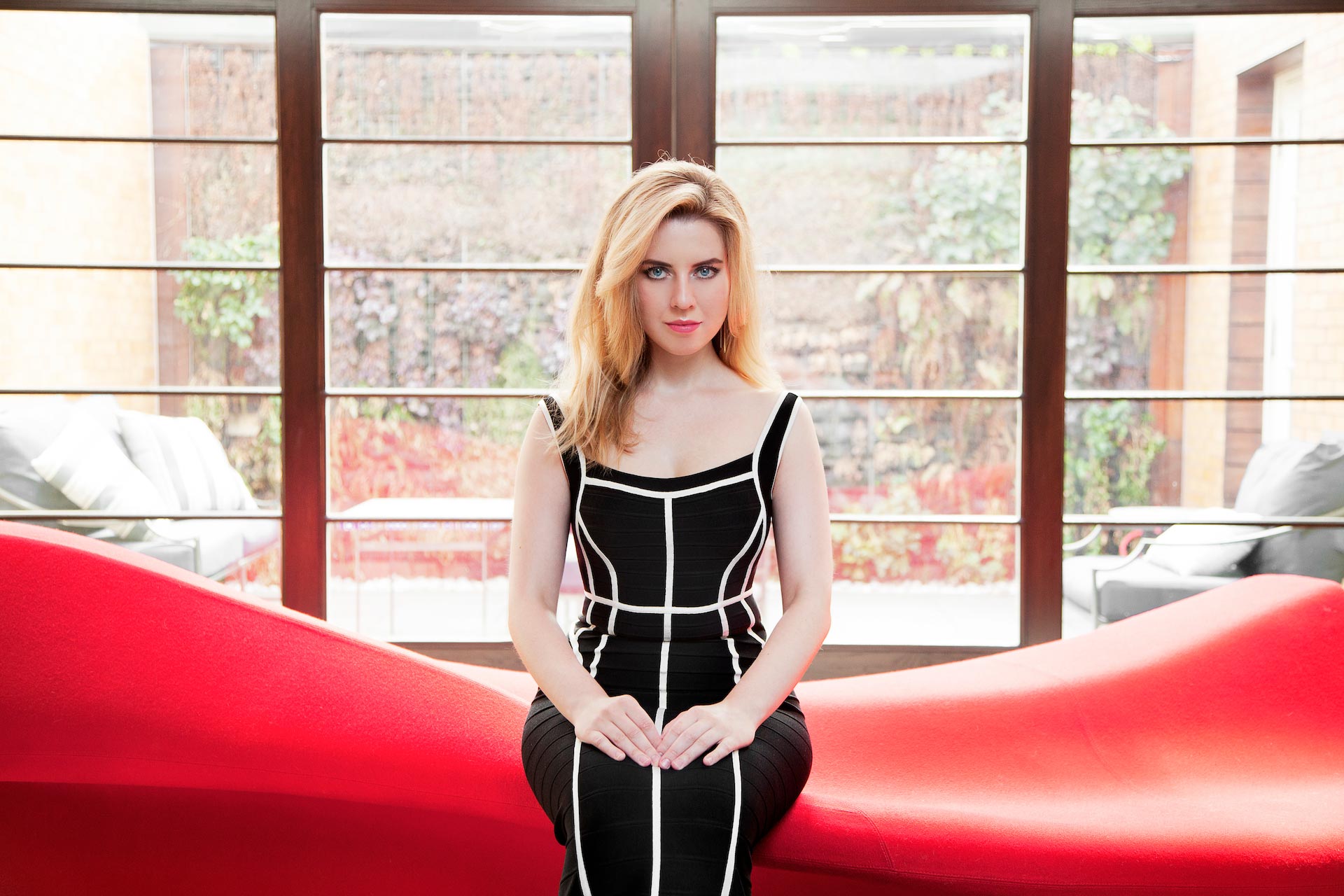![]()
Natasha Paremski Soars in Rachmaninoff’s Titanic Concerto
By Howard Reich
June 24, 2018
His Piano Concerto No. 3, in D minor, stands as a colossus in the repertoire not only because it’s the most difficult to play but also because it’s cast on a gargantuan scale. In terms of melodic gesture, expressive range and technical challenge, it surpasses his three other piano concertos and also those by Brahms, Liszt, Barber and, really, any counterpart in the standard repertory (that excludes the five-movement Busoni Piano Concerto, which culminates with a male chorus singing a “Hymn to Allah”).
The onerous technical and artistic demands of the Rachmaninoff Third, famously portrayed in the 1996 film “Shine,” apparently did not give pause to pianist Natasha Paremski, who sounded fearless in addressing the behemoth Saturday night at the Pritzker Pavilion in Millennium Park. With Carlos Kalmar conducting the Grant Park Orchestra, Paremski not only confronted the piece unflinchingly but managed to make music where lesser pianists make muddle.
As she unspooled the deceptively simple lyric theme that opens the piece, however, there was reason to doubt. Paremski’s opening phrases sounded so relaxed, introspective and rhythmically static that at least one listener immediately wondered if she understood the urgency and forward drive of this music. Was she really prepared to take on the rigors that were about to come?
But once she completed this opening statement, Paremski tore into the piece as only daring pianists do, even while maintaining a degree of clarity and composure one does not often encounter in concert performances of this work.
For better or worse, two recordings of the masterpiece stand as the measure by which subsequent readings tend to be judged: Vladimir Horowitz’s hyper-dramatic, technically phenomenal version with Fritz Reiner conducting the RCA Symphony Orchestra (recorded in 1951) and Van Cliburn’s ultra-poetic, serenely lyrical recording with Kiril Kondrashin leading the Symphony of the Air (1958, the year Cliburn won the first International Tchaikovsky Competition in Moscow).
It would be fair to say that Paremski’s version fell somewhere between these two extremes, her work less thrillingly neurotic than Horowitz’s and less leisurely and contemplative than Cliburn’s.
Hers was a deeply personal Rachmaninoff Third, by turns pensive and tempestuous, warmly songful and brazenly fast. At the core of everything, however, stood Paremski’s idiomatic flair for the way Rachmaninoff must be played – with both sweeping gestures and a sharply defined melodic profile, all amid fistfuls of notes.
The high point of her account of the monumental first movement arrived with the cadenza, Paremski summoning a tremendous surge of sound without sacrificing melodic arc. Her technical prowess may not have been quite Horowitzian (whose is?), but she showed more dash, accuracy and control than most.
Rare is the pianist who can switch from a gossamer touch up high in the keyboard to thunder down low as mercurially as she did in the second movement. And though she didn’t quite achieve the balalaika-like effects of its final pages, she shaped exquisitely articulated phrases from cascades of pitches.
In the culminating third movement, Paremski outdid herself, tossing off diabolically complex passages as if they were child’s play (they are not). But she also captured the essence of Rachmaninoff’s phrasing, which leans toward heightened, sometimes exaggerated emotion. If some of Paremski’s pianissimo passages proved too delicate to project in an outdoor concert setting, that was a small price to pay for a performance as sensitive as this.
Conductor Kalmar, to his great credit, did not compete with the soloist, taking pains to keep the orchestral accompaniment just beneath her dynamic levels. Yet he knew when to suddenly swell a crescendo, also in the Rachmaninoff manner.
The evening opened with Walter Piston’s Symphony No. 6, a meticulously crafted work in the heroic, neo-romantic style of several mid-20th century American composers. Its heart and soul reside in the expansive third movement, and here Kalmar and the Grant Park Orchestra brought forth profundities lodged deep in these pages.
But did Kalmar really need to begin the evening with a hyperbolic, loquacious soliloquy that shed more heat than light on the evening’s program? Better to let the music speak for itself.
Howard Reich is a Tribune critic.

